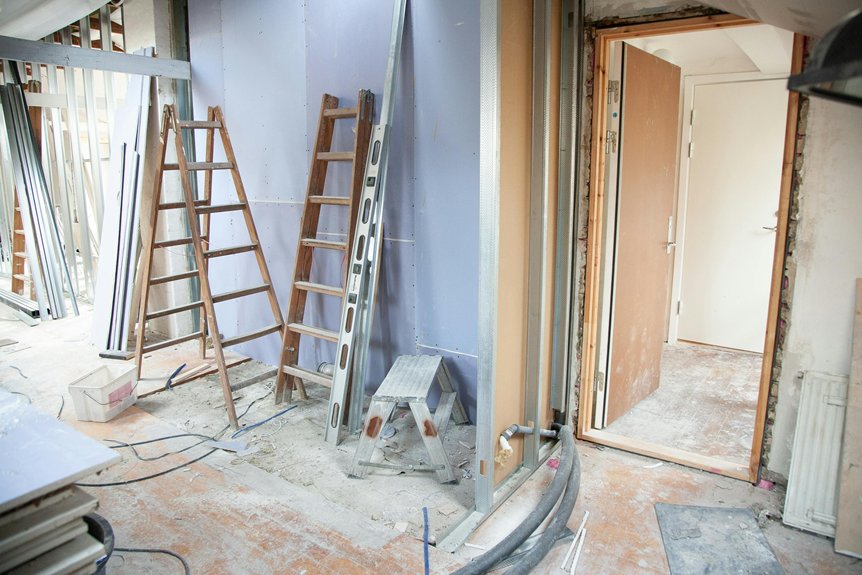Free cavity wall insulation is a government-backed initiative designed to assist homeowners in enhancing energy efficiency by filling the gap between walls at no cost. This insulation effectively blocks heat transfer through materials with low thermal conductivity and traps air pockets to minimise heat loss.
Typically, eligible properties have unfilled cavity walls constructed after the 1920s and must meet specific Energy Performance Certificate (EPC) or council tax criteria. By taking advantage of this scheme, homeowners can lower their energy bills while also contributing to a reduction in carbon emissions.
Continuing, we will explore how to qualify for this programme and the steps to apply effectively.
How Cavity Wall Insulation Works and Its Benefits
Cavity wall insulation operates by filling the gap between the inner and outer walls of a building with materials designed to minimise heat transfer, thereby enhancing energy efficiency.
It effectively blocks conduction through the use of materials with low thermal conductivity, which reduces the flow of heat through solid walls. Additionally, it curtails convection by filling the cavity with small air pockets that disrupt heat-carrying air currents. Materials with low thermal conductivity are chosen to maximize insulation performance, ensuring that less heat escapes during colder months. This creates a thermal barrier that prevents heat from escaping during the winter months and reduces unwanted heat gain in summer. Common insulation materials, such as mineral wool or foam, are typically blown into the cavity via small holes drilled in the exterior wall.
Ensuring proper installation is crucial, as it guarantees that the insulation fills every part of the cavity. This not only helps keep homes warmer but also contributes to lower heating costs, making neighbourhoods more comfortable and promoting a greater sense of energy awareness among residents.
Eligibility Criteria and How to Apply
To qualify for cavity wall insulation, both homeowners and tenants need to meet specific criteria regarding their property and circumstances.
Typically, the property should possess unfilled cavity walls, which are commonly found in homes constructed after the 1920s, particularly between 1924 and 1982.
Properties with an Energy Performance Certificate (EPC) rating of D or below and those located in Council Tax bands A to D in England, or bands A to E in Scotland and Wales, are often suitable for insulation.
Eligibility may also be influenced by benefits or income-related factors.
The application process commences with an initial check, which can be done online or through an energy supplier.
Following this, a property assessment will determine the most appropriate insulation options.
Approved installers carry out the installation work, and applicants will receive clear quotations outlining the associated costs.
Various grants, including the Energy Company Obligation (ECO) and the Green Homes Grant Scheme (GHGS), alongside local initiatives, provide support for eligible households seeking cavity wall insulation.
Environmental Impact and Cost Savings
Cavity wall insulation offers significant advantages, particularly in reducing carbon emissions and lowering energy expenses. By minimising heat loss, households can substantially decrease their carbon footprint, leading to a more sustainable living environment.
The materials commonly used for insulation, such as mineral wool, provide excellent thermal performance while being more environmentally friendly than alternatives like polystyrene or foam. Mineral wool insulation is also non-combustible, adding an extra layer of safety to homes.
While some insulation materials may raise environmental concerns, contemporary solutions prioritise recycled content and ensure safe off-gassing.
Installing cavity wall insulation can lead to noticeable savings on energy bills, making it a financially savvy choice for families seeking to be both economical and environmentally responsible.
Though the benefits may diminish over time, consistent monitoring and further home enhancements can help maintain long-term savings.
Conclusion
Cavity wall insulation provides an effective solution to enhance energy efficiency, reduce heating expenses, and diminish environmental impact. Homeowners in the UK may qualify for free insulation programmes, making it a viable option without financial strain.
This insulation method helps maintain a comfortable temperature in homes, keeping them warmer during winter and cooler in summer. Furthermore, it plays a significant role in sustainability initiatives, contributing to the reduction of carbon footprints.
With a straightforward application process and clear advantages, cavity wall insulation stands out as a sensible choice for those seeking to save both money and energy in the long term.

